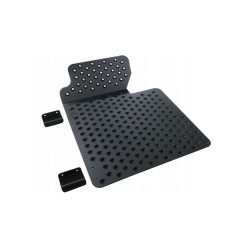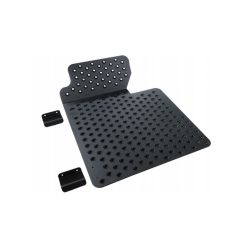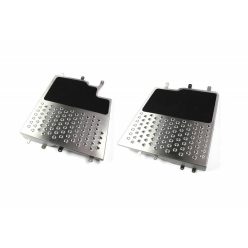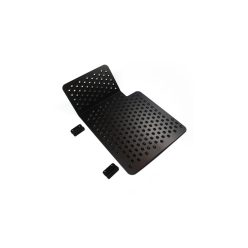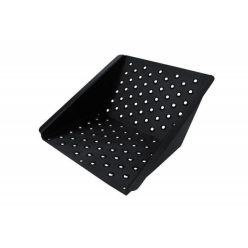Our foot rests include driver and co-driver floor plates for drift/rally use in stainless steel or aluminium. Ribbed, perforated or grip-tape finishes provide a secure foot support for braking, clutch work and left-foot braking. Choose vehicle-specific (e.g., BMW E46/E92) or universal plates with brackets to match your seat and pedal position.
Net price: 139 €
Net price: 139 €
Net price: 139 €
Net price: 139 €
Net price: 139 €
Brief summary & key benefits
Foot rests provide a rigid platform for the driver and co-driver under heavy braking and cornering. With anti-slip surfaces and reinforced edges, they enhance pedal control, reduce fatigue and protect flooring. In drift and rally cars a firm support beside the pedal box is vital, especially for left-foot braking and weight transfer.
Technical basics
Materials: aluminium (light, easy to machine) and stainless steel (stiffer, very durable). Surfaces include dimple-die stamping, dense perforation or coarse grip tape. Rolled edges add stiffness and remove sharp corners. Common thickness is 2–4 mm; long spans or co-driver trays benefit from 3–4 mm.
Geometry: driver plates often feature a heel pocket and a mild ramp; co-driver trays may use taller flanges for bracing during notes. Flat vs straight versions suit flat floors vs tunnel-side mounting.
Fixing: pre-drilled M6/M8 holes or slots ease alignment. Use rivnuts and wide washers to spread loads; add gussets or L-brackets where necessary. On aluminium bodies, isolate stainless fasteners to limit galvanic corrosion.
Finishes: brushed/matt alu reduces glare; stainless keeps its look with minimal care. Grip tape is consumable and easy to replace.
Typical pitfalls: plates too thin that flex, small screw heads pulling through, sparse bolt pattern, or a plate placed too close to the pedal arc restricting movement.
Selection criteria
Use case: for drift choose large, high-traction panels; for rally pick co-driver trays with strong flanges. On track, ensure fine adjustability to match seat and pedal box.
Size & angle: confirm seat position; 5–15° ramp relative to the brake plane is comfortable for most drivers. Width should allow natural foot travel without catching edges.
Material vs weight: aluminium saves mass; stainless tolerates repeated point loads better.
Surface: dimple/perf grips well even when wet; grip tape offers replaceable traction for varying footwear.
Fitment: vehicle-specific plates simplify install; universal parts may need trimming and custom hole patterns.
Installation & maintenance
Mark fixing points; reinforce thin floors with backing plates. Drill at low RPM and deburr edges. Use medium-strength threadlocker and tighten in a star pattern for flat seating. Apply edge trim or rubber on exposed lips to protect shoes and damp noise.
Maintenance: replace worn grip tape, blow dust from perforations, clean stainless with pH-neutral products. Inspect fasteners and rivnuts periodically and re-torque if needed.
FAQ
Q: What angle works for the driver ramp?
A: Typically 5–15°; seat distance and pedal box geometry decide the sweet spot.
Q: Grip tape or perforation?
A: Perforated/dimple plates are durable in wet conditions; tape is convenient when you want replaceable traction.
Q: How do I mount on thin sheet metal?
A: Use rivnuts with large washers or a backing plate to spread loads.
Q: My plate rattles—fix?
A: Add a central fixing, check bolt length and pattern, and use threadlocker.
Q: Do I need edge protection?
A: Recommended—edge trim protects footwear and reduces vibration noise.

